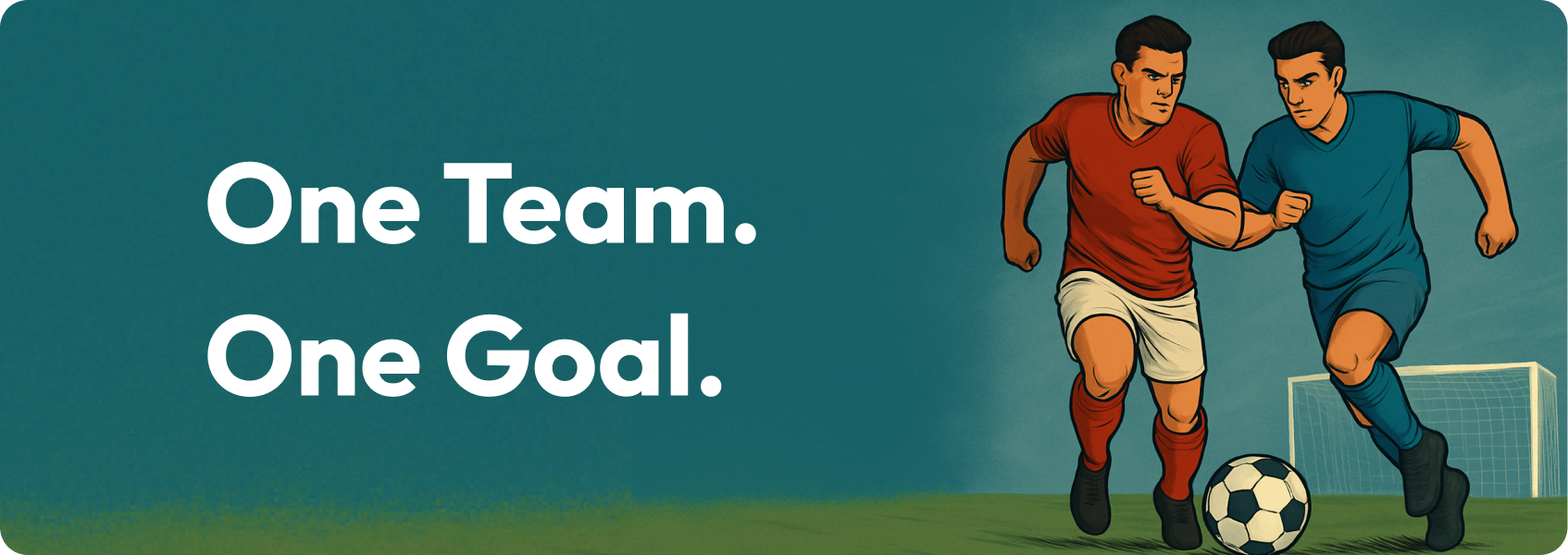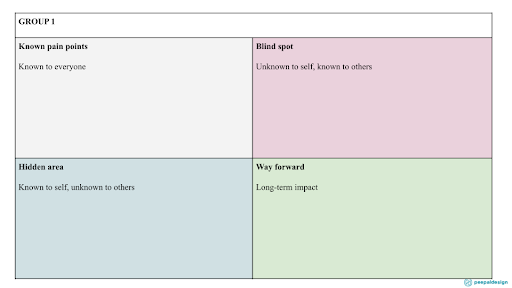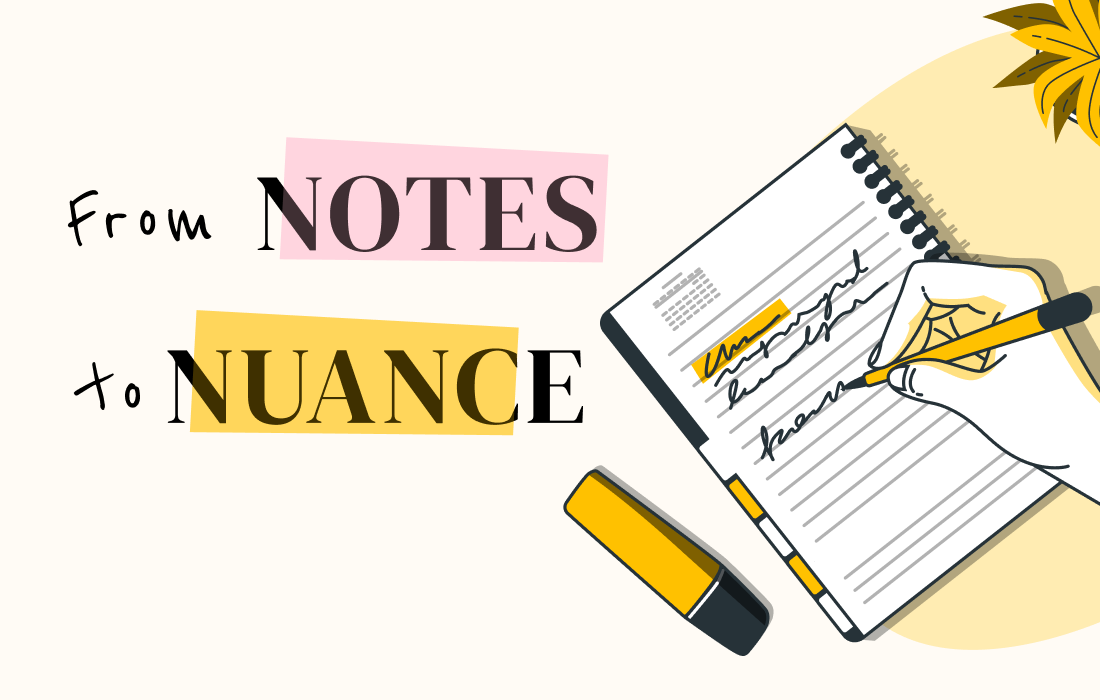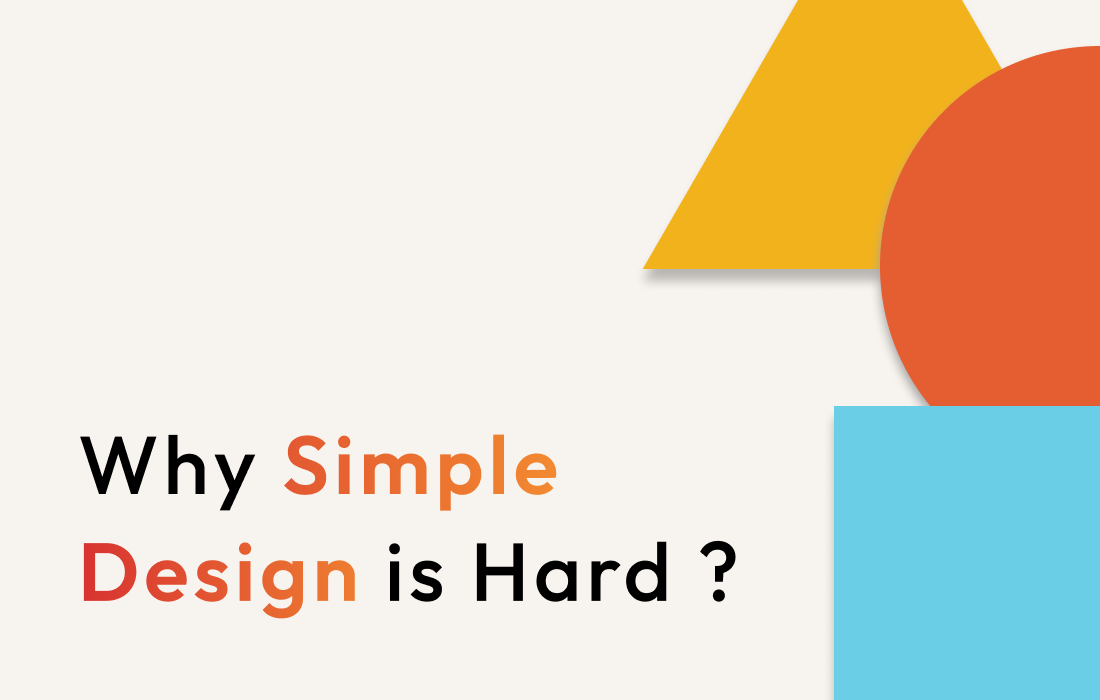Blogs
Working Towards a Common Goal: Uncovering Collaboration Gaps Through UX Research
Shreya Makwana
Posted On May 30, 2025

For a large pharmaceutical company, the question arose for how strategic planning could enhance collaboration between their global teams working from different timezones, and the answer came through user research.
In football, every player—striker, defender, midfielder, goalkeeper—has a distinct role, but the goal is shared: to win as a team. No single star wins alone. Just like on the field, in teams, success comes from collaboration, trust, and playing your part selflessly. Victory is a collective achievement, not an individual feat.
Similarly, for a global organization, collaboration is the key to their growth and success. Just as every football player must align with the team’s strategy, global organizations need coordinated collaboration across roles, regions, and time zones. To achieve this, understanding how teams actually work together becomes crucial, and that is the business objective one of our clients came in with, to enhance their strategic planning across global offices and identify collaboration gaps.
Through user research, we helped them uncover their organization needs and behaviors that would help shape effective collaboration at scale.
What set this project apart was how it forayed into understanding how our users, the employees working in the India office, viewed collaboration with global teams and what were the roadblocks in their way. This was different from the consumer-focussed foundational studies or usability studies I have been a part of till now, and it opened a new door of thinking through research for me.
The end deliverable was a workshop to facilitate solution-oriented thought leadership for stakeholders across timezones using insights from the user research done across global offices. The entire process was a great learning experience, and here’s how me and my project lead navigated a behaviour-centric project from the usual consumer-centric projects we had dabbled in.
The Preparation
The preparation began by first aligning with our global partner on how our focus is to make the participants feel as comfortable as possible to share their thoughts freely.
Through multiple sync meetings over two weeks, we aligned on the direction this research is to take, keeping in mind the end deliverable of a workshop with some activities to help facilitate it.
Then, came preparing for the fieldwork and coordination for it with our client.
Communicate fieldwork requirements clearly for on-site fieldwork
I realized that such a concept of research was not widely known in the client’s work, as research was often assumed to be a survey, rarely ever a tool for organization development. This clarity in assumption allowed for clearer communication on all the nitty gritties for our research such as it being a 1:1 session, and not focus groups; the hour long duration to ensure we have enough time for the participant to share their experiences; and a focus room to help facilitate uninterrupted, confidential interviews.
The Fieldwork
Account for traffic and arrive well in advance
As it was my first on-site fieldwork, it helped that me and my colleague accounted for the unpredictable Bengaluru traffic for each commute, which also acted as an ice breaker with the client. With ample time to familiarize ourselves with the space, as well set up the interview equipment, we started the fieldwork smoothly.
As the nature of the research was quite sensitive, we were proactive in making each participant feel comfortable sharing their thoughts with us. We did so by emphasising the confidentiality of the interview, and our role as an unbiased, third party. This helped us get rich insights as participants appreciated the time we spent in explaining how we maintain confidentiality when they asked, allowing them to open up to us and share their experiences freely.
Some participants will not consent for audio to be recording- and that’s okay
During our discussion with our global partners, confidentiality and our protocol for audio recording came up, as we anticipated there might be participants who would not be comfortable with it. True to our foresight, there were a couple of participants who preferred not to have their audio recorded. This is where robust notetaking played a vital role, to ensure all the data was captured accurately.
Adapt notetaking to the participant and the nature of the topic
Speaking of notetaking, I owned notetaking for all the sessions while my colleague navigated the moderation guide according to each participant. Our participant pool consisted of senior leadership, advisors, principals, and individual engineers. It was therefore important that some questions be tweaked according to the profile we were interviewing, to get as much context and insight as possible. The noteguide should then be easily navigable, as leadership questions varied from individual contributors. A practice that helped was having a colour-coded system, as well as a notes cleanup at the end of the day. I started off with a structure borrowed from the moderator’s guide, but adapted it when newer pieces of information came up.
Sensemaking & Reporting
Get aligned early on what the report should deliver
After 3 days of data collection, we headed back to the PeepalDesign office to start analysing it. As our analysis was a part of a larger reporting done by our global partners, it was important for us to first align with them on the direction of the report, and also think of how it would shape the workshop. Our key takeaway was that this research was first focussing on identifying and articulating the right problem statement for our client’s to focus on, and then help facilitate their thinking for solutions.
Uncover the larger themes and look for connections
The idea behind this research was not to represent one of the global teams of our client, rather the entire parent organization at large. So while we analyzed and identified problem statements for the India office we interviewed, we also referred to our global partner’s interview findings and analysis from the global team, to arrive at organization-level problem statements.
Preparing for the Workshop
Keep it simple and as time-saving as possible
The idea of facilitating a workshop was both exciting and nerve-wrecking. After all, a workshop with a scope as broad as solution-thinking leaves endless possibilities! Again, navigating uncertainty was combatted by aligning early on with stakeholders on any constraints or preferences, and there were. The workshop was to be conducted in 4 hours, including the final report readout as well as presentation of findings from the workshop. That left us with a narrowed area of coming up with activities that are easy to follow with a negligible learning curve.
Best way to assess if it works is to try it out yourself
Me and my project lead then scored through multiple activities, and discussed which activity suited which problem statement. We each held markers in our hands, as we looked at the various diagrams and flows we created on the whiteboard. This session itself helped us better understand our workshop participants as we tried completing each activity by thinking from their perspective. It also refined how we structured our activities, making it as simple as possible.
For example, we would take a leaf out of a pre-existing framework, such as the Johari Window, or and tweak it to our problem statement. Here’s an example below:


D-day: Facilitating the workshop
Prepare all you can so you can leave nerves at the door
And the day was finally here- the workshop to help our clients think of solutions to develop their strategy for their organization’s collaboration strength. As our workshop was hybrid, we carried additional laptops to help facilitate smoother breakout groups, with some participants being in person with us in the room, and some joining us virtually from global offices.
A day before, me and my project lead conducted a dry run for our technical set up, as well as set up a Google Slides presentation for all our workshop activities to ensure our time and focus remained only towards facilitating the workshop with the participants. With everything set in place, we headed for our client’s office, and Bengaluru’s unpredictable traffic surprised us again, by having us arrive an hour earlier than anticipated. Better early than late though right?
As a facilitator, you must be unbiased and unafraid to interject
As soon as the report readout ended, with the room still ringing from various discussions that already took place as each finding was projected on the conference room screen. Groups were quickly formed, and breakout rooms assigned with one researcher moderating them. In a 20 minute rotation of Round Robin, each group presented their views on the problem statement, and the moderator facilitated thinking towards a way forward through the activities we had designed.
Focus on what your stakeholders want the most
At the end, each researcher presented their high level synthesis from their focus groups, with respect to the short, medium and long term goals each group identified for their problem statements. This was a fast-paced synthesis, starkly different from the reports prepared meticulously as documents or slide decks. Here, all that mattered was the finding, being as actionable as possible to get the minds buzzing of the leadership stakeholders present in the room.
Learnings
This was in contrast to the longer reports I had prepared for consumer studies, and it fascinated me how user research could also help identify actionable areas in this manner. The focus was on larger trends and strategic vision, with people at the center and how they collaborated. As a researcher just starting in her UX career, this project helped me understand the notion of people and empathy at play deeply, as there was no tangible product or feature to test on, just human behaviour and thinking.
Overall, what I realized was most important is to be aligned internally as a team for facilitating hybrid workshops across timezones, to ensure consistency and appear as a single voice to the client. Activities may not span out down to the T as planned, and it’s always good to account for flexibility. My key takeaway from this experience is to align early on and throughout internally to play a united tune, and account for ample time before the actual workshop for dry runs and anticipated hurdles.


